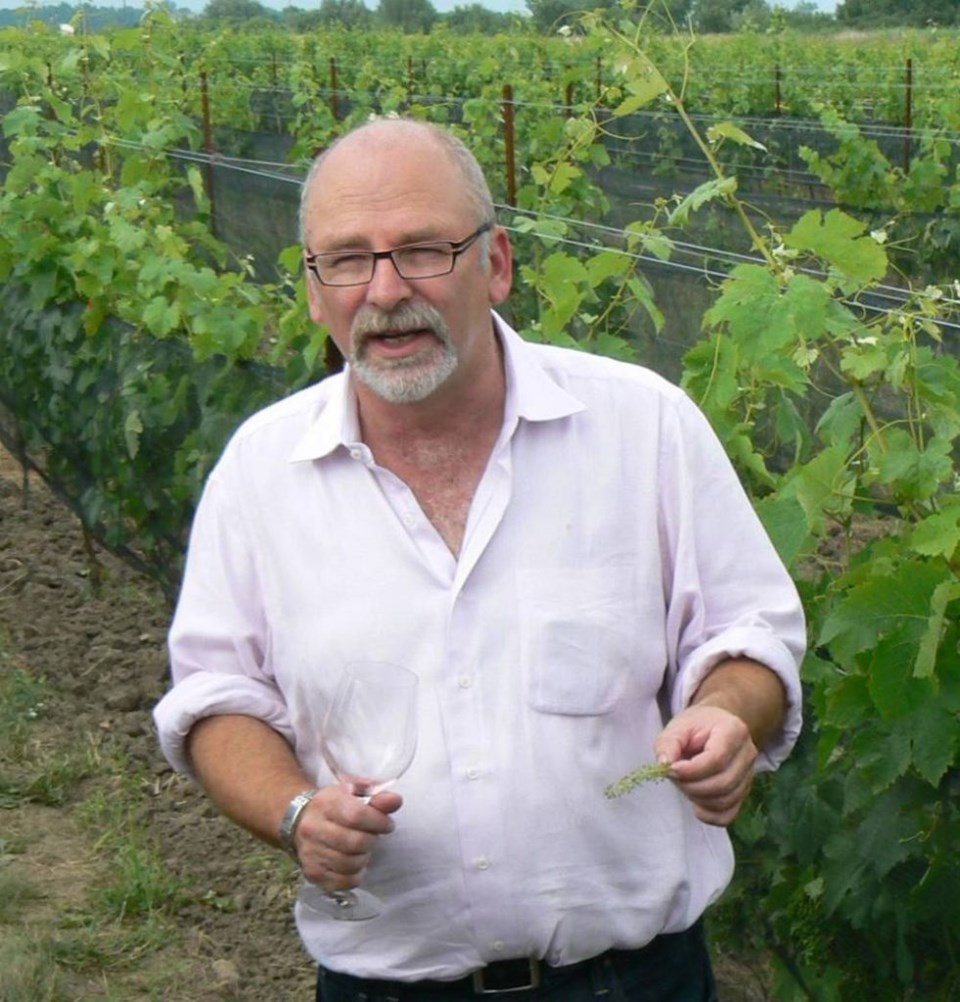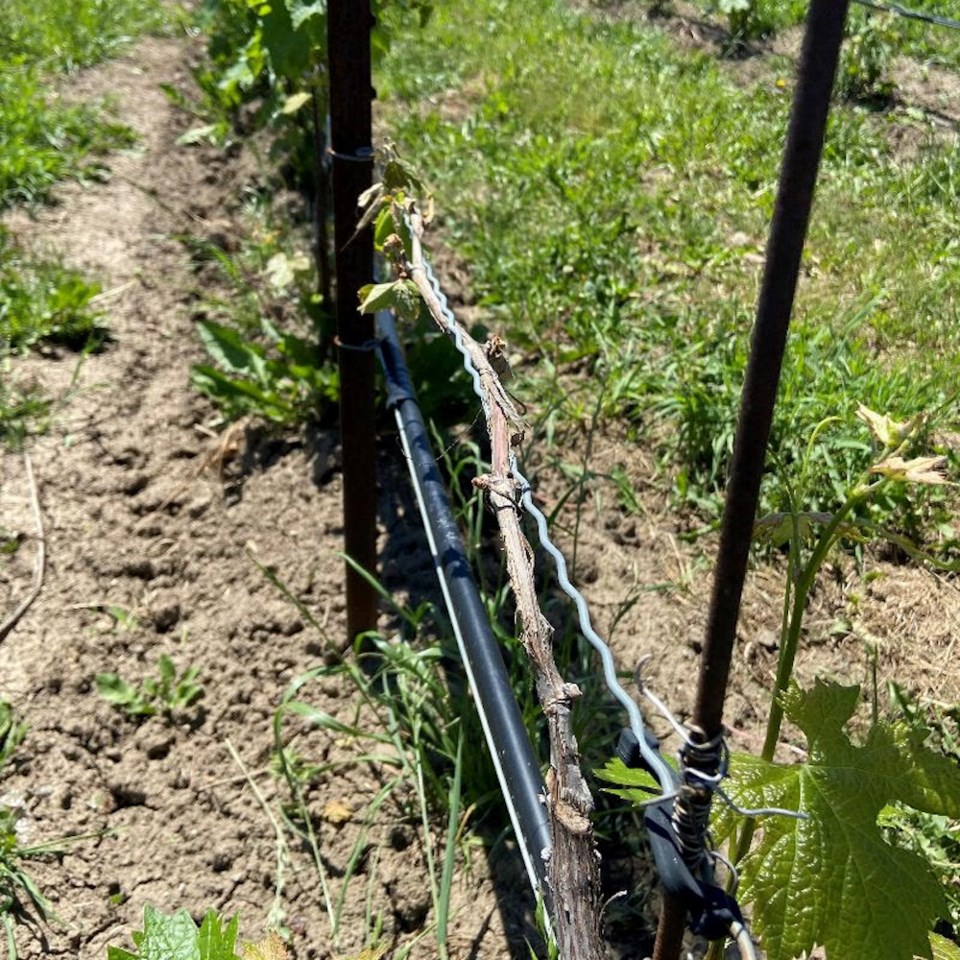
Niagara grape grower Kevin Watson takes a moment to collect his thoughts on the disaster that was the fall of 2021 and winter of 2022 in Ontario. “It’s not good at all. It’s bad for our industry.”
The relentless rain in September was the immediate problem for much of the 2021 crop, but a far greater concern has emerged for the 2022 crop in the wake of the wet weather during harvest and the freezing temperatures later in the winter.
By the time spring and flowering of the buds occurred, growers noticed swaths of unhealthy vines in the vineyard. And sadly, it has amounted to widespread crop loss across the entire Niagara region that will have a devastating financial impact on wineries, especially for the smaller businesses, virtual wineries and those who rely on growers for all or some of their grapes. There just won’t be enough to go around.
Watson pegs the loss of crop in Niagara to half of what a normal vintage will produce. Some growers and wineries fared worse than others. Chair of the Grape Growers of Ontario, Matthias Oppenlaender, agrees with that estimate: “I anticipate the crop to be down to probably half of a normal year,” he said. “We are trying to get a handle on it, as we are talking. There are also vineyards that are being removed.”
Just drive around the main grape-growing areas of Niagara and you can see for yourself the vineyards that were hit the hardest. Many are simply gone while others will not even produce one grape from the 2022 vintage.
Watson, whose family owns and operates K J Watson Farms on Line 2 in Niagara-on-the-Lake and farms 100 acres of multiple grape varieties, has never seen anything like what happened to the vines over the winter and spring of 2022. It wasn’t like the winter damage years of 2014-2015 or even 2003 and 2005, he said. “The issues came from the rain last fall.”
Because growers needed to hang the water-logged, “juiced up crop” long enough to get the sugar levels (brix) needed to make VQA wine, it led to a heavier crop with the roots sitting in the water. “They went into winter not as hardy as they should have been,” he explained. “The vines were just weaker.”
Watson, named Grape King in 2007-2008, estimated that over-wintering vines from 2021 were up to 5 degrees less hardy. While buds can normally withstand temperatures to around -23 C, grapes from 2022 were being compromised at -18 C, according to VineAlert, a Brock CCOVI system for measuring bud hardiness.
Watson said the two months of rain last fall laid the groundwork for the looming disaster. The rain caused the crop to be late. “This was because the rains diluted the flavours and we had to wait to allow the sugars to come back up. Also, when it is raining the sun is elsewhere and the buds need the sun to harden off and prepare for winter.”
He said the vines had added extra stress with the delayed harvest as well as little exposure to the sun and that resulted in a nearly 5 C drop in winter hardiness.
“We then saw a few nights of -20/21 and unbeknownst to us, damage occurred. I was cutting buds in March to determine how many buds to leave, and we were very optimistic. There were some reports of damage in the area, but I remember thinking that maybe we were spared.”
That optimism turned out to be all for naught. “I was wrong, and we sustained huge damage.”
While Watson said that next year the surviving vines have the potential to be back at 100 per cent, he did lose an eight-acre block of Chardonnay and damage to mostly Merlot, Sauvignon Blanc, Riesling, and Pinot Gris blocks. “We had a good many years of very little winter damage and it’s always in the back of your mind. Fingers crossed that we don’t have another for a while. We’re all better when we grow more grapes. And we make such great wine here in Ontario.”
Watson said his farm, with the help of crop insurance that covers up to 80 per cent of the loss, will come out of this just fine. But for this harvest, not only will the crop be drastically reduced, but he is also going to have to farm at lower tonnage, anywhere from a half a tonne to an acre to a tonne an acre.
“The small guy producing good wine will have a hard time,” said Watson, noting the larger wineries such as Arterra Wines Canada and Peller, because of their large grape contracts, are always first in line for the grapes. The smaller wineries fall in somewhere behind them.
He noted that the worst hit varieties at his farm were both the Merlot and Sauvignon Blanc while the Cabernets, Chardonnay, Riesling, and hybrids were less impacted.
Southbrook Organic Vineyards owner Bill Redelmeier, who pens an informative industry newsletter for his subscribers every month, was one of the first in Niagara to discuss the crop loss.
He had reported in an earlier newsletter this spring that Southbrook had survived the winter that hit -24.8 C at the winery, a devastating temperature for bud survival, which leads to loss of vines. Damage can occur at below -20 C in Niagara, and quite likely at -24 C.
In an updated newsletter, Redelmeier wrote: “A few weeks ago, I wrote that we had survived the winter, except for a small block of Merlot. We had checked all the vines, and they seemed to be mostly alive, and we had high hopes for a reduced, but mostly normal, crop. As the spring starts to turn to summer, a different story is being told. We think that we will have lost about 75 per cent of our crop for this year.”
Plants, including grapevines, have evolved over millions of years to maximize survival, explained Redelmeier. “The vine does this in many ways, but especially by having multiple buds. The primary bud is there to send out a shoot with multiple nodes, each with leaf and flower buds. The bud at the tip (the apex, or the apical bud) sends out hormones that tell all of the spare buds that all is well, and to stay dormant. This is called apical dominance.”

If the apical bud dies, he continues, “those hormones disappear, and the dormant buds start to grow, but usually a couple of weeks later than usual. If you are in a warm climate, those secondary buds will produce a reduced, but serviceable crop. In a climate like Canada’s, however, the crop will rarely ripen enough to give us a quality crop and the harvest date will be so late that it puts the health of the vine in jeopardy. In order to save the vine, and if the secondary buds are fine, we will go through the vineyard and remove the flowers so the plant can focus on healing itself. We lose this year’s crop, but the vines will be healthy for a full crop next year.
-winesinniagara.com.